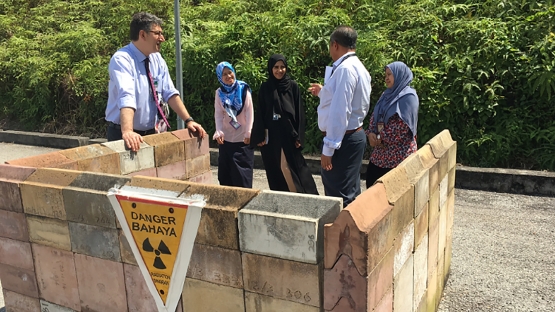
Interview with the representative of Nuclear Malaysia Individual Monitoring Laboratory (Photo: R. Loong/Nuclear Malaysia)
“ORPAS missions not only review the regulatory settings of the country but also focus on end users and technical support organizations for protection and safety, such as training facilities,” said Peter Johnston, Director of the IAEA’s Division for Radiation, Transport and Waste Safety. “This practical approach is a reason for the increasing number of requests from our Member States for this type of mission.”
Malaysia and Paraguay both hosted ORPAS missions in May 2017.
Malaysia, a country with two regulatory authorities, hosted a large-scale appraisal conducted by eight specialists who looked at 18 facilities including medical centres, a radioisotope production laboratory and a research reactor.
In Paraguay, a team of five experts from Latin America assessed individual and workplace monitoring as well as other service providers, and facilities and activities in the medical and industrial sector.
The teams studied self-assessment reports prepared by the host countries ahead of the missions. They also visited facilities and interviewed employees and officials involved in radiation protection of workers.
César Cardozo, Minister of Radiological and Nuclear Regulatory Authority (ARRN) of Paraguay, said the ORPAS service was useful: “Nuclear applications used in various sectors such as health or industry have become very important for our country,” he said. “The ORPAS service was fundamental for strengthening the capacity of our country’s occupational radiation protection.”
ORPAS missions highlight not only areas where performance needs to be improved, but also good practices that are shared with other countries.
Chile is set to host a mission later in 2017. Panama and Nicaragua both have invited preparatory visits to help them prepare for future ORPAS appraisals.




